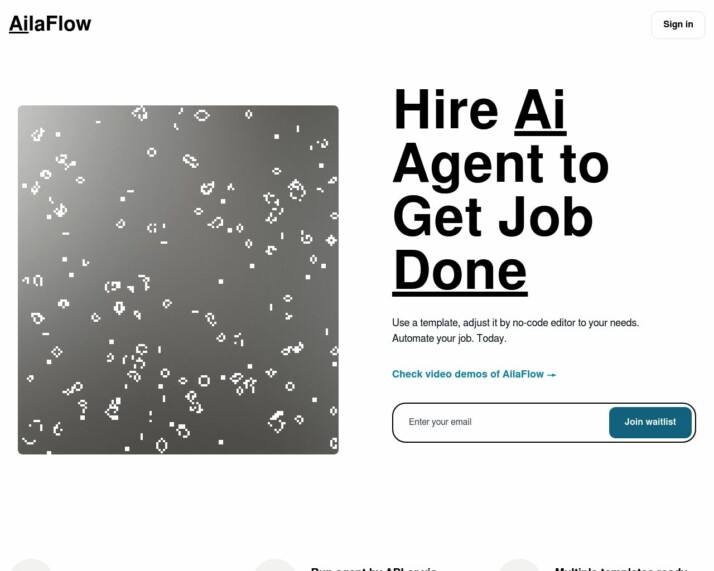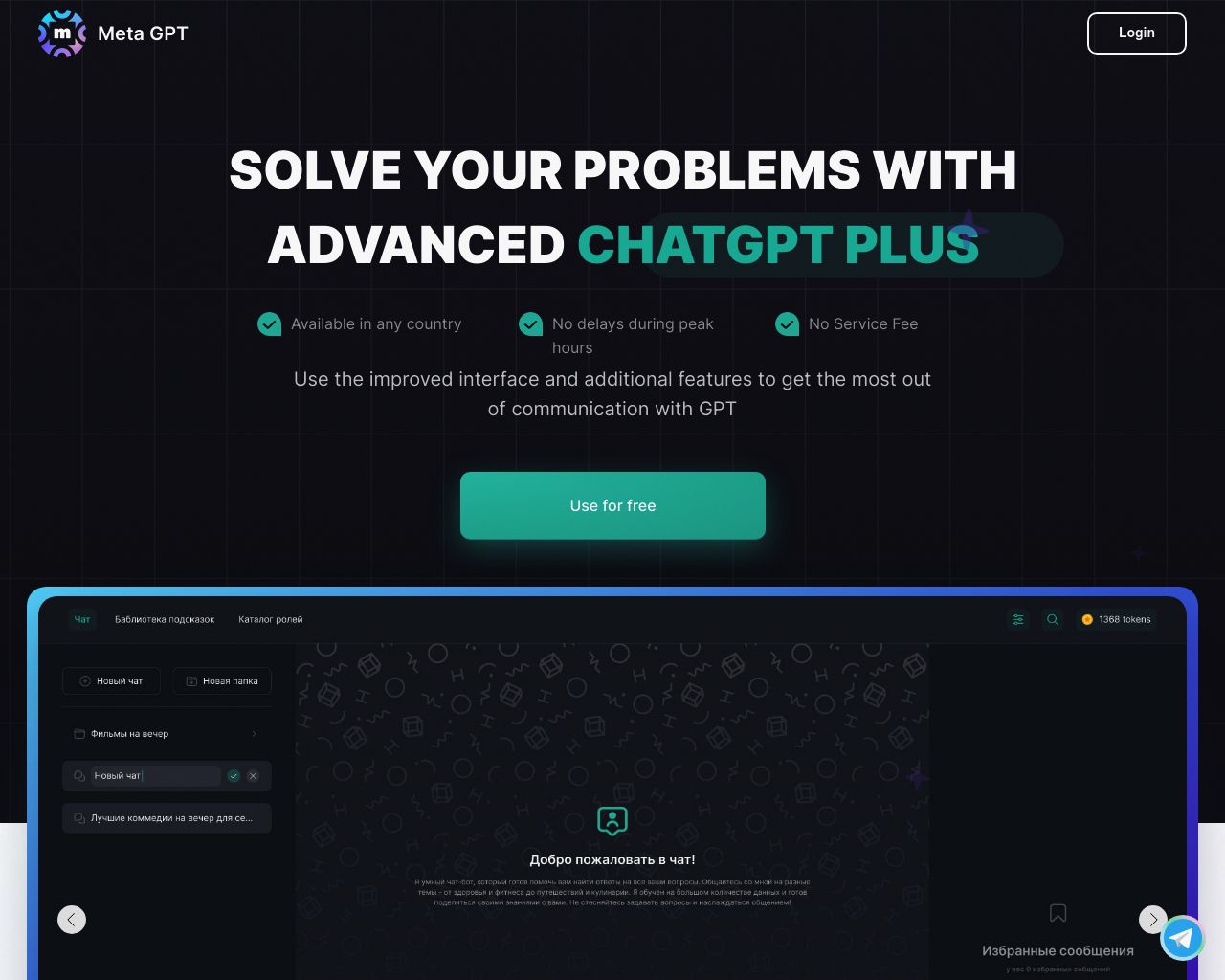AilaFlow And MetaGPT: A Detailed Comparison
AI agent development platforms have transformed the landscape of software creation, enabling businesses to harness the power of artificial intelligence with unprecedented ease. AilaFlow and MetaGPT represent two distinct approaches to this challenge, each offering unique capabilities and limitations. This comparison delves into the strengths and weaknesses of these platforms, contrasting their features with SmythOS, a comprehensive solution that addresses many of their shortcomings. Whether you’re a developer seeking powerful API integrations, a business leader focused on scalability and security, or a non-technical professional looking for user-friendly tools, this analysis provides valuable insights to guide your choice in AI agent development platforms.
AilaFlow Overview
AilaFlow offers a no-code platform for building AI agents, focusing on simplicity and versatility. The platform’s core feature is a sequential workflow designer, enabling users to create AI-powered applications without coding expertise.


The visual builder stands out as AilaFlow’s primary tool, allowing users to design workflows for various applications such as graphical programming languages, sequence diagram editors, and AI agent creation. This approach democratizes AI development, making it accessible to users with limited technical backgrounds.
AilaFlow offers a no-code platform for building AI agents, focusing on simplicity and versatility.
AilaFlow’s platform boasts compatibility with modern browsers and mobile devices, storing workflow definitions in JSON format. It supports popular frameworks like Angular, React, and Svelte, enhancing its flexibility across different development environments. The platform offers customization options including light/dark themes and full configurability, adapting to diverse user preferences.
While AilaFlow excels in providing a user-friendly interface for AI agent creation, it lacks some advanced features found in other platforms. The absence of hosted agents, separate development and production environments, and advanced AI capabilities like multimodal interactions or autonomous agents may limit its appeal for more complex AI projects. Additionally, the platform does not mention specific security features, data handling capabilities, or deployment options, which could be crucial for enterprise-level users.
MetaGPT Overview
MetaGPT empowers developers to create AI agents through an innovative no-code platform. The framework simulates a software company structure, assigning distinct roles like product managers, architects, and engineers to different AI agents. This approach enables efficient collaboration on complex software development tasks.


MetaGPT’s core philosophy, “Code = SOP(Team),” integrates human Standardized Operating Procedures (SOPs) with Large Language Models. This unique combination enhances multi-agent collaboration, reducing errors and inconsistencies often associated with AI systems. The platform breaks down tasks into manageable subtasks, allowing specialized agents to contribute their expertise to the overall project.
MetaGPT’s core philosophy, “Code = SOP(Team),” integrates human Standardized Operating Procedures (SOPs) with Large Language Models. This unique combination enhances multi-agent collaboration…
The sequential workflow designer serves as MetaGPT’s visual builder, allowing users to create various types of workflows and applications without coding. This feature makes the platform accessible to both technical and non-technical users, expanding its potential applications across industries.
While MetaGPT offers powerful capabilities for AI agent creation, it lacks some advanced features found in other platforms. The framework doesn’t provide hosted agents, separate development and production environments, or built-in memory and context management. Additionally, MetaGPT doesn’t offer autonomous agents, explainability tools, or multi-agent collaboration features out of the box.
MetaGPT’s unique approach to AI agent development sets it apart in the competitive landscape. By mimicking human collaboration processes within an AI framework, it offers a novel solution for creating complex, coherent software systems. However, users seeking more comprehensive features like hosted environments, advanced debugging tools, or extensive API integrations may need to consider additional tools to supplement MetaGPT’s capabilities.
Feature Comparison
AilaFlow and MetaGPT offer distinct approaches to AI agent development, each with unique strengths and limitations. AilaFlow provides a user-friendly sequential workflow designer, enabling users to create AI-powered applications without coding expertise. Its visual builder democratizes AI development, making it accessible to users with limited technical backgrounds. However, AilaFlow lacks advanced features like hosted agents, separate development and production environments, and multimodal interactions.
MetaGPT takes a different approach by simulating a software company structure, assigning roles like product managers and engineers to different AI agents. This framework enhances multi-agent collaboration on complex software development tasks. MetaGPT’s core philosophy integrates human Standardized Operating Procedures with Large Language Models, improving consistency and reliability. However, like AilaFlow, MetaGPT doesn’t offer hosted agents, separate environments, or built-in memory and context management.
In contrast, SmythOS outperforms both platforms in several key areas. It provides hosted agents for development and production, supports multiple environments, and offers a robust drag-and-drop interface. SmythOS also excels in memory and context management, autonomous agent capabilities, and multi-agent collaboration. Unlike AilaFlow and MetaGPT, SmythOS includes features for debugging, explainability, and transparency, making it a more comprehensive solution for AI agent development and deployment.
Feature Comparison Table
| AilaFlow | MetaGPT | SmythOS | |
|---|---|---|---|
| CORE FEATURES | |||
| Visual Builder | ✅ | ❌ | ✅ |
| No-Code Options | ✅ | ❌ | ✅ |
| SECURITY | |||
| Constrained Alignment | ❌ | ✅ | ✅ |
| IP Control | ❌ | ❌ | ✅ |
| COMPONENTS | |||
| Data Lakes | ❌ | ❌ | ✅ |
| DEPLOYMENT OPTIONS (EMBODIMENTS) | |||
| Staging Domains | ❌ | ❌ | ✅ |
| Production Domains | ❌ | ✅ | ✅ |
| DATA LAKE SUPPORT | |||
| Hosted Vector Database | ❌ | ❌ | ✅ |
| Sitemap Crawler | ❌ | ❌ | ✅ |
| YouTube Transcript Crawler | ❌ | ❌ | ✅ |
Best Alternative to AilaFlow and MetaGPT
SmythOS stands out as the superior alternative to AilaFlow and MetaGPT for AI agent development and deployment. Our platform offers a comprehensive suite of features that address the limitations of both competitors while providing unparalleled flexibility and power.
We empower users with a visual drag-and-drop interface that simplifies complex AI workflows without sacrificing functionality. Unlike AilaFlow’s limited workflow designer or MetaGPT’s code-heavy approach, SmythOS enables rapid agent creation accessible to both technical and non-technical users. Our no-code options democratize AI development, allowing anyone to build sophisticated agents.
SmythOS enables rapid agent creation accessible to both technical and non-technical users. Our no-code options democratize AI development, allowing anyone to build sophisticated agents.
SmythOS excels in deployment versatility. We provide hosted agents for both development and production environments, a critical feature absent in AilaFlow and MetaGPT. This allows seamless transition from testing to live implementation. Our platform supports multimodal interactions, enabling agents to process and respond to various data types, enhancing their utility across diverse applications.
Our advanced memory and context management capabilities set us apart. SmythOS agents maintain context over extended interactions and leverage long-term memory, resulting in more intelligent and contextually aware responses. This is coupled with robust debugging tools and transparency features, ensuring you can trust and refine your AI solutions effectively. The ability to orchestrate multi-agent collaborations further amplifies the problem-solving potential of our platform.
In essence, SmythOS combines the best of both worlds — the user-friendliness of visual builders with the power and flexibility of advanced AI frameworks. We offer a scalable, secure, and feature-rich environment that caters to individual developers, SMEs, and large enterprises alike. By choosing SmythOS, you’re not just selecting an AI agent builder; you’re embracing a future-proof platform that evolves with your needs and pushes the boundaries of what’s possible in AI automation.
Conclusion
AilaFlow and MetaGPT offer unique approaches to AI agent development, each with distinct strengths. AilaFlow’s user-friendly sequential workflow designer enables AI application creation without coding expertise, while MetaGPT simulates a software company structure to enhance multi-agent collaboration. However, both platforms lack certain advanced features that limit their applicability in complex AI projects.
SmythOS emerges as the superior choice, offering a comprehensive suite of features that address the limitations of AilaFlow and MetaGPT. Our platform provides hosted agents for both development and production, supports multiple environments, and offers a robust drag-and-drop interface. SmythOS excels in memory and context management, autonomous agent capabilities, and multi-agent collaboration. We also include advanced features for debugging, explainability, and transparency, making SmythOS a more complete solution for AI agent development and deployment.
For businesses and developers seeking a versatile, powerful, and user-friendly AI platform, SmythOS stands out as the clear winner. Our extensive integration ecosystem, with over 300,000 integrations, allows users to create complex workflows effortlessly. Experience the future of AI development with our risk-free trial, offering unlimited agent creation and a 30-day money-back guarantee. Explore our diverse range of AI-powered agent templates to jumpstart your projects and revolutionize your workflow. With SmythOS, you’ll unlock the full potential of AI, driving innovation and efficiency across your organization.
Last updated:
Disclaimer: The information presented in this article is for general informational purposes only and is provided as is. While we strive to keep the content up-to-date and accurate, we make no representations or warranties of any kind, express or implied, about the completeness, accuracy, reliability, suitability, or availability of the information contained in this article.
Any reliance you place on such information is strictly at your own risk. We reserve the right to make additions, deletions, or modifications to the contents of this article at any time without prior notice.
In no event will we be liable for any loss or damage including without limitation, indirect or consequential loss or damage, or any loss or damage whatsoever arising from loss of data, profits, or any other loss not specified herein arising out of, or in connection with, the use of this article.
Despite our best efforts, this article may contain oversights, errors, or omissions. If you notice any inaccuracies or have concerns about the content, please report them through our content feedback form. Your input helps us maintain the quality and reliability of our information.
